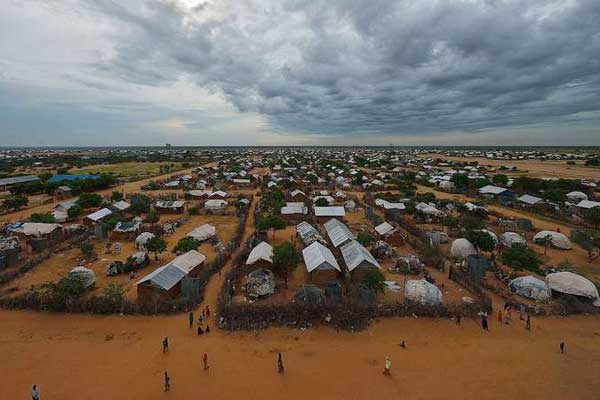Somalis leaving Kenya, but mass return not possible, UN says

Nearly 5000 refugees have returned to Somalia from the Dadaab camps in the past year.
Another 4,500 preparing to leave Kenya, a United Nations spokesman said on Friday.
He cautioned, however, that “security and socio-economic conditions in many parts of Somalia are not right for large-scale returns.”
UN refugee agency spokesman Adrian Edwards added that many of the remaining 332,000 residents of the Dadaab complex are reluctant to return due to the lack of equipped schools and of job opportunities in Somalia.
“To end one of the world’s most complex refugee situations it is vital to make sure that the small number of returns can be successful and contribute to a more peaceful and stable Somalia,” Mr Edwards said at a press briefing.
“More support and investment in the country’s social and economic infrastructure are urgently needed.”
Foreign Minister Amina Mohammed and other Kenyan officials are scheduled to take part in a Somalia aid-pledging conference in Belgium on Wednesday.
The international gathering, which will include representatives of the UN, European Union and other African nations, is set to consider a plan for sustainable returns of refugees to Somalia.
The envisioned $500 million, two-year initiative will focus on rebuilding infrastructure in parts of Somalia, Mr Edwards said.
The plan also calls for improvements in law enforcement, schools, health care, and clean-water and sanitation facilities.
The UN refugee agency assists Somalis returning home from Kenya by arranging transport and by providing cash grants, food and basic domestic items such as sleeping mats, mosquito nets, solar lanterns, hygiene supplies and kitchen utensils.
While Kenya hosts the largest number of Somali refugees, Ethiopia is sheltering nearly 250,000 Somalis displaced by war and hunger.
An estimated 200,000 Somalis are living across the Gulf of Aden in Yemen. More than a million Somalis are displaced within their own country, the UN says.
Daily Nation